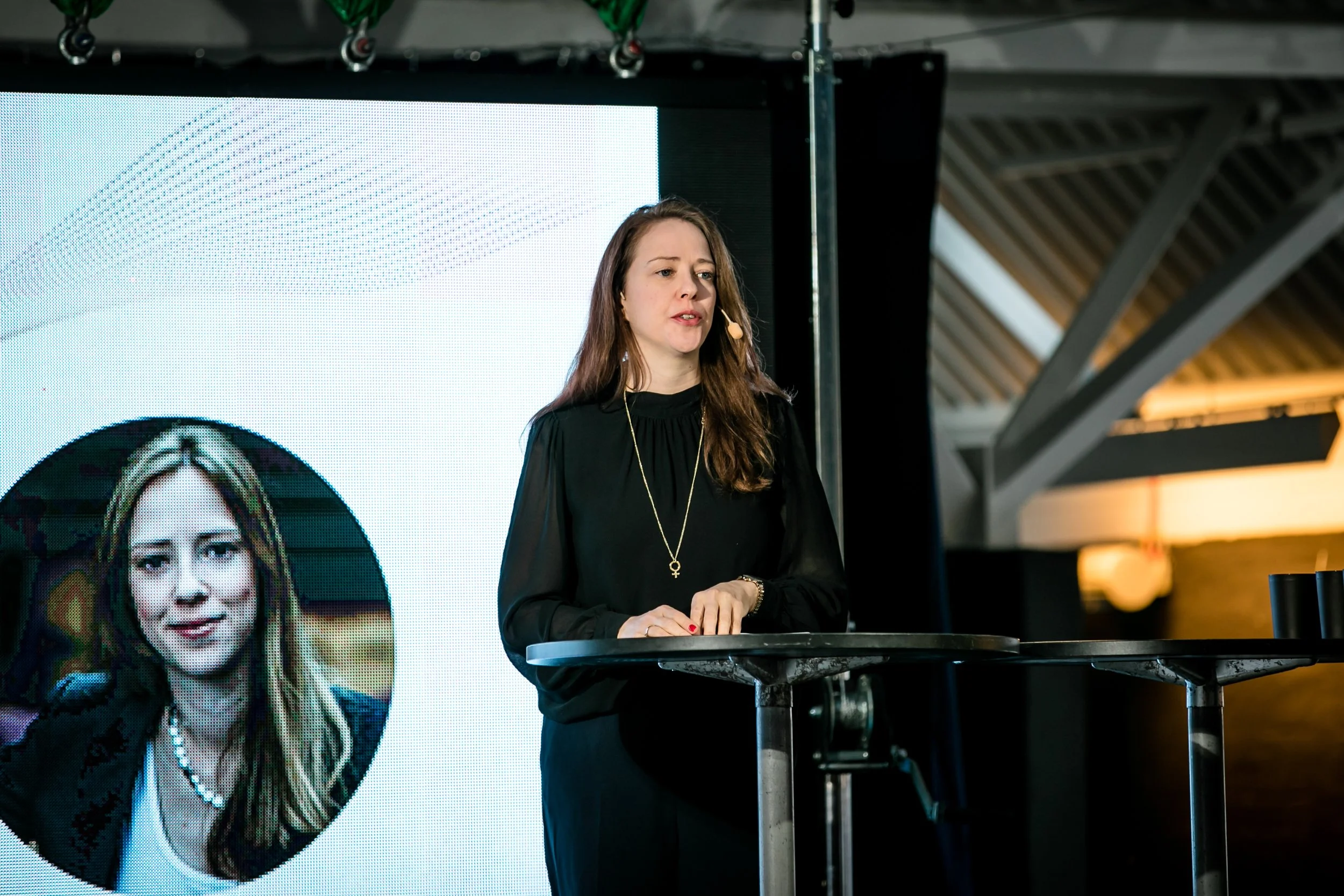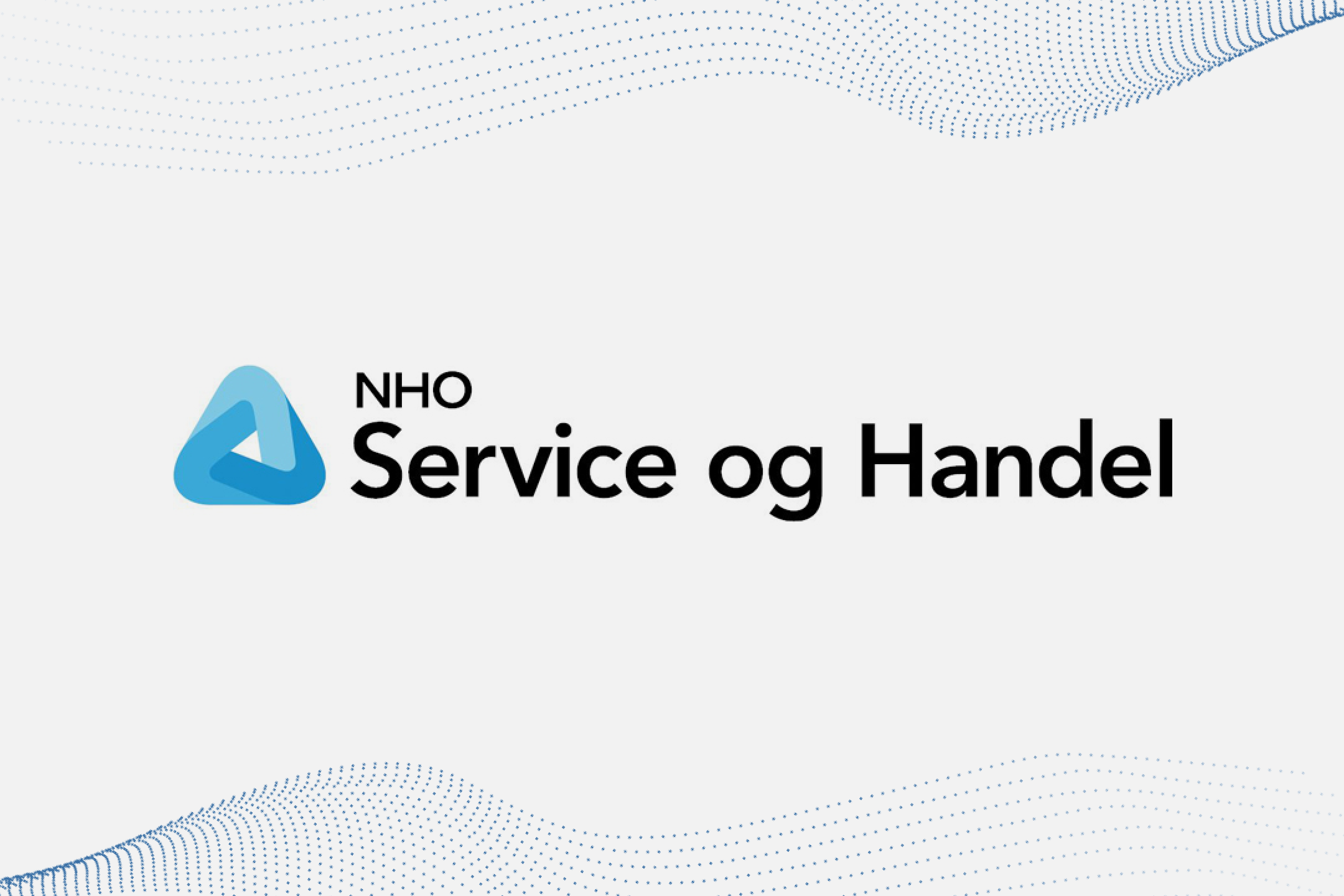The New Nordics: Learning from Crises
Circular economy’s role in strategic autonomy and improving local and national resilience is emerging as one of the key qualities driving the circular transition. The grand opening of the Nordic Circular Summit 2022 in Stockholm focused on the many global crises, such as COVID-19, the war in Ukraine, the energy crisis, supply chain disruption, climate crisis and more, and learning from them how to build more resilient systems and societies in the Nordic region for the future.
Einar Kleppe Holthe and Elin Bergman, Managing Partners of Nordic Circular Hotspot, moderating the session ‘The New Nordics: Learning from Crises’.
Áslaug Arna Sigurbjörnsdóttir, Iceland’s Minister of Higher Education, Science and Innovation.
There are many ways to tackle crises. Each country, policymaker or company addresses these issues in their particular way. The Summit was opened by Áslaug Arna Sigurbjörnsdóttir, Iceland’s Minister of Higher Education, Science and Innovation. She gave an example of the Icelandic government’s policy innovations to complete the comprehensive shift from their dependency on fossil fuels to renewable geothermal energy — and their aim now to become a frontrunner in the Nordics with the target of carbon neutrality by 2040. Iceland has also implemented a new modern ministry for Higher Education, Science, and Innovation to change from a natural resource-based society to a knowledge-based society. Áslaug called on us all to learn from the prevalent crises and work together more — to combine our creative minds to develop a society based on circular solutions and sustainable ways of living.
“When we fail to act, we are gambling on our future.”
Åsa Lindhagen, the Vice mayor for Climate and Environment of Stockholm.
Another strong political voice was provided by Åsa Lindhagen, the Vice mayor for Climate and Environment of Stockholm. She reiterated the call and requirement for bold action. “When we fail to act, we are gambling on our future. And right now, it is clear that we have not done enough! To tackle this crisis and create circular and resilient societies we need to meet them with a strong global, coordinated and holistic approach — and we need to act!
When global governments fail to act, then we need to do more. In the city of Stockholm, we are firmly committed to cutting our emissions, adapting to climate change, strengthening our city's biodiversity and pushing for local energy production. We believe that cities have an important role to play and we have to show leadership. This is why we are pushing Stockholm to become climate positive by 2030. This has required bold decisions by our politicians and it has required action. The key is that you need to act!
But does this mean we have done enough? No! We have just set up a new goal to also cut our consumption-based emissions by half by 2030.” She continued: “But we cannot fix the climate crisis alone, we need to cooperate with key stakeholders — so that business leaders, entrepreneurs and innovators change the economy from a linear to a circular one and to create circular cities where all waste is seen as a resource, we need you to help us! In these crises, we can accelerate our journey towards a fossil fuel-free and circular society — we can succeed. And the truth is, we need to succeed. To fail is not an option!”
Marthe Haugland, a Senior Innovation Advisor at Nordic Innovation.
This call for increased collaboration was echoed by Marthe Haugland, a Senior Innovation Advisor at Nordic Innovation, who explained how they support the circular transition in the Nordics by financing initiatives such as Nordic Circular Hotspot. She highlighted the Nordic added value of increased collaboration and saw the circular economy as an important tool and an area for Nordic cooperation.
Policy reform is required for the circular transition
“Circularity is the only alternative economic model that will address the crises of our time: the environmental crisis, the economic security crisis and global equity.”
Andrea Liverani, a Lead Strategist at the World Bank.
Andrea Liverani, a Lead Strategist at The World Bank, talked about the policies needed for the circularity transition to tackle the natural resource crisis. The world uses 100 billion tonnes of resources every year and this amount is projected to double in 30 years. The global average of material consumption a year per person is 14 tonnes. Material consumption accounts for 90% of biodiversity loss and two-thirds of global carbon emissions. At the same time, we are entering a global crisis of the depletion of critical raw materials while the extraction costs of common resources are rapidly increasing.
Andrea presented 8 main challenges identified in a new report by the World Bank, ‘Squaring the Circle: Policies from Europe’s Circular Economy Transition’:
1. Reducing resource use is tough, but about 12% of materials used in Europe are recycled which is more than the global average of 7,2%. Domestic material use is also declining in Europe and there are now fewer heavy material industries in the region and instead more businesses based on services.
2. Companies are the engines driving the transition, but circular business model use is still very limited, only between 5-10% of companies have them and only 8,6% of the materials used are recycled.
3. Businesses are facing internal and external barriers, such as regulatory conflicts, lack of skills, lack of consumer demand and more.
4. Linearity still costs less than circularity. Virgin materials are still cheaper than secondary materials and VAT systems are designed to tax materials every time they are used and cycled back into the economy.
5. Fiscal reform can reverse the negative growth impact of circular economy policies. Circular objectives can be achieved at a relatively small direct cost to the economy. However, using CE tax revenues to reduce labour taxes eliminate GDP losses and reverse negative labour effects. Circular policies integrating green fiscal reform can also support growth and welfare.
6. Domestic circular policies have a cross-border dimension. Europe relies heavily and increasingly on imported materials and imports 11.3% of material consumption — 35.7% when embedded materials are considered (the material footprint).
7. Developing countries are particularly exposed to EU circular policies. A large share of their exports is accounted for in material exports to the EU.
8. Trade policy will need to incorporate circular objectives. As the regulatory gap between the EU and developing countries grows, negative spillovers are likely to rise and it is important to seek cooperative solutions with third countries, help them make the CE transition and manage adverse impacts.
To have a realistic chance of achieving the circular transition, incentives are needed. The report makes the following suggestions:
Ensure adequate pricing signals through economic and fiscal instruments reflecting linearity’s externalities.
Introduce material taxes whilst reducing labour taxation: an environmental tax shift can reduce linear biases whilst alleviating labour costs through revenue recycling.
Tax shifts should be geared towards reskilling for circular economy jobs.
To summarise the strongest message in Andrea’s presentation was that circularity is the only alternative economic model that will address the crises of our time: the environmental crisis, the economic security crisis and global equity.
Many of our crises can be solved with the circular economy
“The circular economy is about maximizing the use of man-made objects. In this, labour is a key resource and taxing labour is something that should be changed.”
Dr Walter R. Stahel, Founder of the Product-Life Institute Geneva.
The last, and a highly awaited, keynote speaker of the opening session was the circular legend Dr Walter R. Stahel from the Product-Life Institute Geneva. He started his speech by reminding us that the circular economy and the performance economy are deeply connected. The circular economy is about maximizing the use of man-made objects. In this, labour is a key resource and taxing labour is something that should be changed in the circular economy because otherwise people will be discouraged to work.
He presented the six obstacles on the road to a sustainable resilient society, and the circular economy can solve the top three on that list:
1. Synthetic materials in the environment (‘waste’)
2. Global climate change (GHG emissions)
3. Growing anthropogenic mass (shrinking biomass)
4. Growing global population (8 bn in mid-Nov 22)
5. Hunger (food distribution crisis)
6. Climate justice, education, migration, and refugees
The circular industrial economy is about innovation, competitiveness and economics. What is needed by industry, academia and R&D centres is to research waste prevention tools to avoid future repetition of today’s anthropogenic waste problem by
developing circular energy and material sciences and related circular systems solutions to maintain values,
creating new business models that internalise the cost of waste and risk: selling objects and molecules as a service instead, and
researching behavioural sciences, shifting from consumer to user.
Walter also called on policymakers to take an innovative role to create a circular industrial economy in a society of affluence — to do so demands a political vision, such as for decarbonisation and to create local jobs. This also calls for determination and adapted legal frameworks, such as:
Changing public green procurement to buy performance, not objects;
Stop taxing workers’ wages but instead tax undesired factors and non-renewable resources;
Removing current VAT on the value-maintaining services of the circular economy; and
Give carbon credits for preserving embodied CO2 emissions.
Walter ended his speech by emphasising that we need to develop transdisciplinary innovation in systems in order to achieve a circular economy and to do that we have to break down the silos in academia, business and industry. For that, it is very important that we develop new systems performance solutions.
Throughout the opening session, it was clear that there is much we can learn from the ongoing crises. In many cases, they have made us more aware of how vulnerable our society is and made us speed up the process to more resilient societies. The circular economy is one of the best and strongest tools to help us get there on time. There is, however, still much work to be done — and the Nordic region has all the right conditions to be a frontrunner in this transition. However, decisive policy actions have a strong role in making this happen, together with the need to work together much more and with increased efficiency.
Written by Elin Bergman (Cradlenet)
Audience following the first day of the Nordic Circular Summit 2022.
Further reading you might be interested in:
Financing Circular Economy and Business Models

















